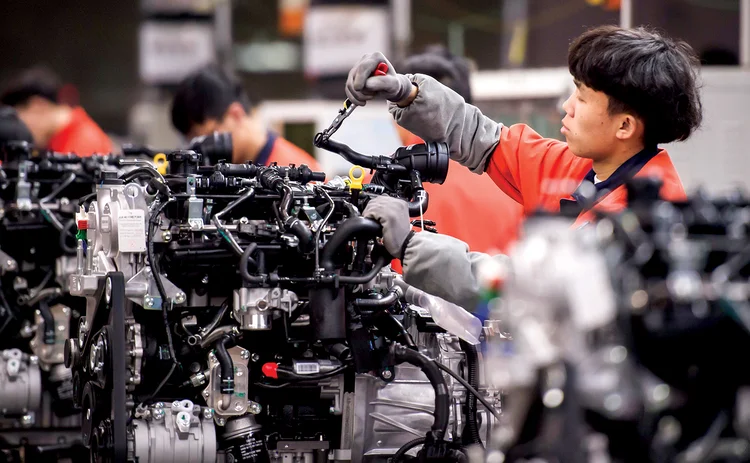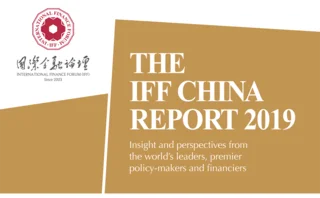
FIEs – A fair hearing, please


There seems to be prevailing opinion in the US that 90% of its jobs have gone to China. To some degree, everyone – at least among the general public – believes the US-China trade deficit is killing the US economy, and it is thought that US consumers are spending most of their money on Chinese products. This article examines a study carried out by the US Federal Reserve and reveals the reality of the situation.
In descending order, US GDP comprises four parts: consumer spending; government spending; business spending; and the difference between exports and imports, a deficit in the case of the US. Around 70% of GDP is consumer spending – more than US$19.6 trillion. Most people, including many politicians, seem to believe the vast majority of this is spent on goods made in China.

The report by the Federal Reserve Bank of San Francisco in 2011 indicates that, of the 70% – not 50, 80 or 90% – of GDP that is consumer spending, only 1.2% actually goes to China. US consumers are definitely not spending a significant percentage of their money on Chinese goods – only 1.2% is actually going to China.
It is therefore difficult to understand the goal of the US in this argument – should it try to reduce 1.2% to 1%? To 0.8%? When will it achieve those numbers?
The US trade deficit – the fourth part of GDP – amounts to $375 billion. This sounds like a lot of money, but is actually less than 2% of US GDP. To break that down into smaller numbers: if US GDP were $1,000, its trade deficit would be $20. That certainly does not throw an entire economy apart. Putting the numbers into perspective, the trade deficit does not seem a big problem. What is the goal – to reduce that $20 to $15 or $10?
Unlevel playing field
The question we have to ask is: What are we actually arguing about? US businesses in China are justified in asking where the goalposts are. They have faced difficulties in China, and I would like to address the real solution, which is the two countries sitting down and, honestly and in private, talking about and settling their issues. I think that’s very achievable.
Are there intellectual property rights (IPR) issues? Certainly there are in the opinion of one expert on IPR issues in China. He feels China has passed all the laws it needs, and that at central government and provincial levels sufficient enforcement exists. The problem arises at local levels, where enforcement needs to be improved and become more airtight. The two countries can work together to implement this; perhaps the US can share its methods and technologies to help China achieve full IPR protection.
Of IPR arguments filed in Chinese courts today, 99% are by Chinese organisations against other Chinese organisations. IPR protection is just as important to China and its own innovation-
based economy as to foreign technology. The US and China must co-operate and work out these areas.
On the losing side
An uneven playing field is undeniable: state-owned enterprises (SOEs) in many situations are preferred, not necessarily openly at the central government level, but at many local levels. Private companies are hurting. To cite a personal example: in one of my own investments in China I had a dispute with a local SOE, the government intervened and we took it to arbitration as agreed. The government then cancelled the land-use rights, which ended the argument. We lose, they win: this is happening all across China and needs to be addressed.
As president of the American Chamber of Commerce in South China (AmCham South China), which represents more than 2,300 companies, there is no single entity I can approach to discuss a company’s problem with another company. China really needs to reach out to the three major American chambers in China – Beijing, Shanghai and AmCham South China.
A mechanism should be set up at the highest level to bypass authorities at local and provincial levels so the chambers can present their problems, have a fair hearing and obtain a resolution at central government level. It’s not a matter of taking sides, but of allowing a company to have a fair and honest hearing without fear of unfair treatment from local courts or entities, as I experienced.
AmCham study
AmCham South China released a study in October 2018 that revealed US companies are being damaged through tariff and counter-tariff friction more than Chinese companies. Our assessment of the situation has been honest, and we have not falsely told our leadership: “Great job, you’re succeeding.” The study also showed that this trade friction is not just wounding Chinese and American companies, but is taking a substantial toll on companies from other countries either working in or with facilities and operations in China and other places.
This trade war is hurting supply chains, labour movement and investment plans going forward, and it has created more uncertainty. If it continues for a long time, it is going to be very disruptive to investment matter, supply chains, labour and population movement, transportation, shipping lanes, innovation, economic development, and so on. We see no benefit from this trade friction and suggest there are much better ways to address these issues.
Professor Michael Enright at the University of Hong Kong undertook a 16-month study of the impact of foreign-invested enterprises (FIEs) on China’s economy. The study shows that China is one of the most open economies in the world, even though there is a need for it to ‘open up’ further via greater reform. The impact of FIEs was analysed across China using two indicators: investment by foreign enterprises, and salaries spent by their employees.
Across China, 33% of GDP is created by FIEs, as is 27% of employment. Shanghai, for example, has the highest concentration of FIEs on China’s east coast. Here, 67% of industry output is created by FIEs, 90% of its hi-tech output and one-third of employment. In Shenzhen, half of all GDP and employment is created by FIEs. A closed economy is not possible when FIEs play such a major role in boosting GDP, innovation and progress.
China is and will continue to be very important to the global economy going forward, and for the past 20 years has contributed a large share of growth to the world economy. We want to work with China to ensure that continues. Certainly, we can convince our leadership, but first I need to convince our companies that we have a mechanism where they can be heard and their difficulties can be addressed quickly.
Only users who have a paid subscription or are part of a corporate subscription are able to print or copy content.
To access these options, along with all other subscription benefits, please contact info@centralbanking.com or view our subscription options here: subscriptions.centralbanking.com/subscribe
You are currently unable to print this content. Please contact info@centralbanking.com to find out more.
You are currently unable to copy this content. Please contact info@centralbanking.com to find out more.
Copyright Infopro Digital Limited. All rights reserved.
As outlined in our terms and conditions, https://www.infopro-digital.com/terms-and-conditions/subscriptions/ (point 2.4), printing is limited to a single copy.
If you would like to purchase additional rights please email info@centralbanking.com test test test
Copyright Infopro Digital Limited. All rights reserved.
You may share this content using our article tools. As outlined in our terms and conditions, https://www.infopro-digital.com/terms-and-conditions/subscriptions/ (clause 2.4), an Authorised User may only make one copy of the materials for their own personal use. You must also comply with the restrictions in clause 2.5.
If you would like to purchase additional rights please email info@centralbanking.com test test test







